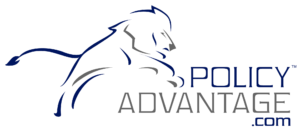How RAG (Retrieval-Augmented Generation) Can Improve Cost, Quality & Access in Healthcare
At PolicyAdvantage.com, we’re constantly tracking innovations that help shape the future of healthcare. One of the most promising developments is the emergence of RAG, or Retrieval-Augmented Generation — a cutting-edge AI framework that’s helping improve the way patients, providers, insurers, and policymakers interact with the healthcare system.
What is RAG?
RAG stands for Retrieval-Augmented Generation, a type of AI model that combines two powerful components:
- Retrieval: It pulls relevant, real-time information from a trusted database or knowledge base.
- Generation: It uses that information to create a coherent, accurate, and context-aware response in natural language.
In simple terms, instead of relying solely on pre-programmed knowledge or static datasets, RAG can “look up” the latest information and generate customized responses in real time.
This model is particularly useful in complex, data-rich environments like healthcare — where facts are constantly evolving, personalization is key, and accuracy is critical.
Why RAG Matters in Healthcare
Let’s explore how RAG directly contributes to improving cost, quality, and access — three pillars that define a strong, equitable healthcare system:
1. Lowering Costs
- Administrative Efficiency: RAG can reduce time-consuming back-office tasks like billing inquiries, prior authorizations, or policy interpretation. For example, AI assistants powered by RAG can pull from insurer handbooks and benefit plans to answer member or provider questions automatically — cutting call center volume and overhead.
- Streamlining Claims Processing: By retrieving and cross-referencing clinical guidelines and claims history, RAG can flag potential errors or mismatches early — reducing denials, rework, and appeals.
🔍 Example: A health insurer uses RAG to assist customer service reps. When a member calls about whether a procedure is covered, the AI retrieves the most relevant policy terms in real time and generates a clear explanation. This reduces human error and eliminates costly follow-up calls.
2. Improving Quality of Care
- Evidence-Based Decisions: RAG can quickly surface the most up-to-date clinical guidelines and research, helping doctors make better-informed treatment decisions. This supports value-based care initiatives that prioritize outcomes over volume.
- Decision Support for Providers: RAG can be embedded into electronic health record (EHR) systems, allowing clinicians to ask nuanced questions (“What’s the recommended treatment for Stage II hypertension in elderly patients with diabetes?”) and get answers based on the latest literature and patient data.
🩺 Example: A physician treating a complex case uses a RAG-powered assistant that retrieves NIH guidelines, prior patient outcomes, and drug interactions to help determine the best treatment plan — reducing unnecessary procedures or medications.
3. Expanding Access to Information and Services
- 24/7 Member Support: Patients and members can use RAG-powered virtual agents to get answers to insurance, eligibility, or care coordination questions around the clock, improving digital engagement without increasing labor costs.
- Language and Literacy Access: RAG models can translate complex health or policy language into plain, understandable terms — bridging gaps for non-native speakers or people with lower health literacy.
🌐 Example: A Medicaid member uses a chatbot to ask questions about dental coverage. The chatbot retrieves the right information from the plan documentation and explains it in simple terms, in the member’s preferred language.
Why This Matters for Insurance Agencies Like PolicyAdvantage.com
As an independent insurance agency at the intersection of healthcare and technology, PolicyAdvantage.com is well-positioned to help employers, individuals, and partners understand the value of tools like RAG. Here’s how:
- HR & Benefits Tech Integration: RAG can be embedded in benefits platforms to help employees make smarter open enrollment decisions.
- Support for Compliance: As ACA and state regulations evolve, RAG can help your clients stay compliant by providing accurate, timely information.
- Improved Customer Service: Imagine AI-driven tools on your website that can instantly pull and explain coverage options, subsidy eligibility, or plan comparisons.
Final Thoughts
Retrieval-Augmented Generation isn’t just another buzzword — it’s a practical, powerful AI technology that has the potential to reshape healthcare delivery and insurance. By reducing administrative waste, supporting better clinical decisions, and making healthcare more understandable and accessible, RAG aligns with the triple aim: better care, lower cost, and improved access.
At PolicyAdvantage.com, we’re committed to staying ahead of these trends — so we can help clients not only navigate the system, but thrive within it.


Leave a Reply
Want to join the discussion?Feel free to contribute!